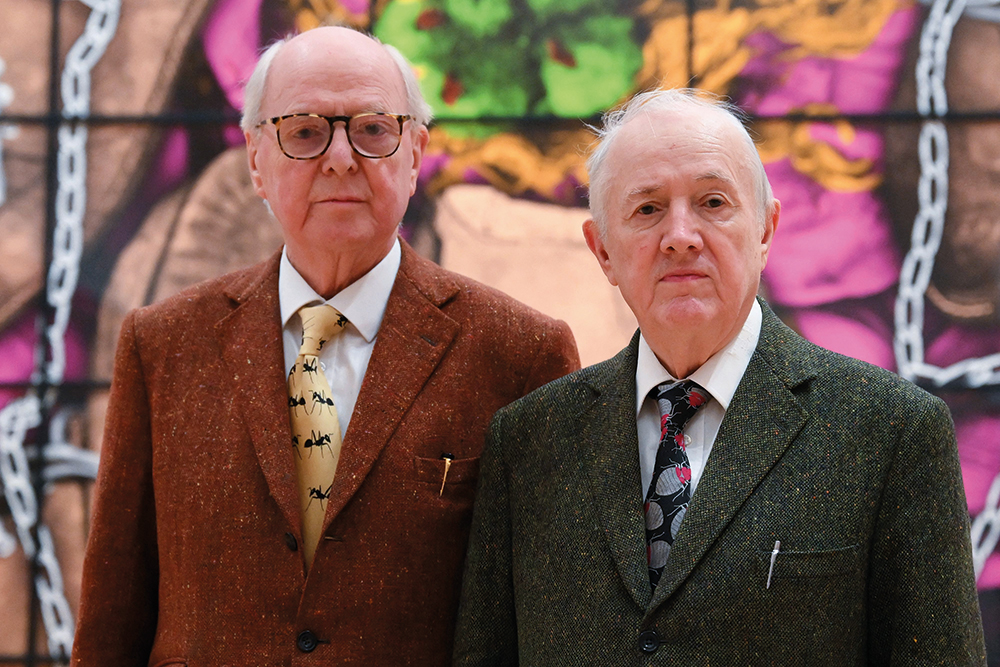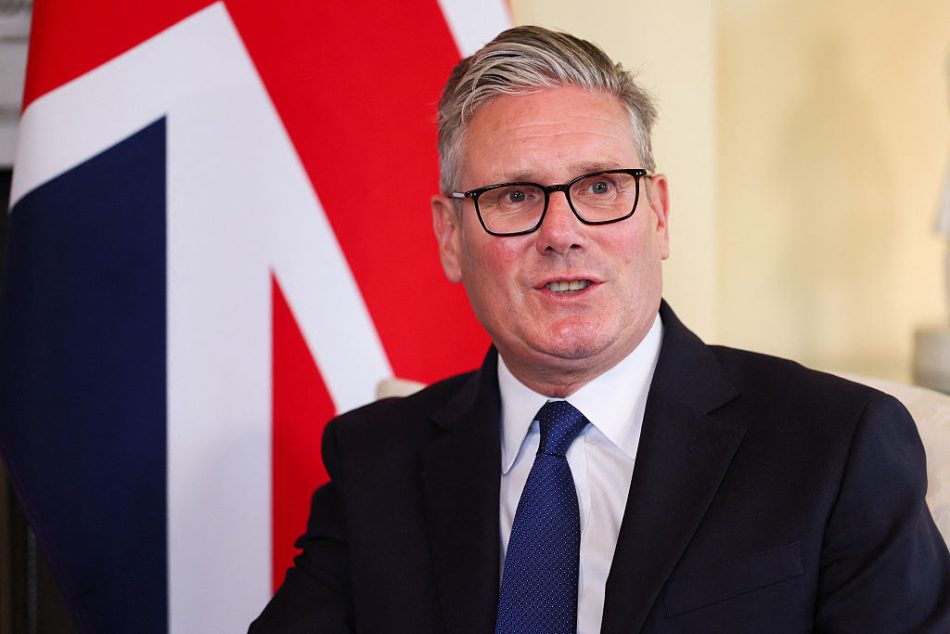
James Birch is a somewhat mysterious art dealer and curator, whose first great triumph was mounting a Francis Bacon exhibition in Moscow in 1988. He wrote a gripping book about that adventure, Bacon in Moscow, and has now written an even more gripping follow-up, about taking Gilbert and George to Moscow, Beijing and Shanghai.
Mounting the Moscow exhibition meant getting drunk every night, but Birch carried it off with aplomb
Birch was born ‘circa 1956’, according to Wikipedia, and grew up in Primrose Hill, London. Both his parents were artists and also communists, which he claims was not unusual in the 1960s (though I’d say it was, quite). At the age of 12 he wrote a fan letter to Chairman Mao and was rewarded with a calendar featuring photographs of Mao in heroic poses and a copy of The Little Red Book. While his classmates worried about the Vietnam War, he was following the progress of the Cultural Revolution.
He studied art history at Aix-en-Provence university, then worked as a driver for Adam and the Ants. He liked dressing up
as a way of hiding my face, who I really might be. I wanted so much to be part of something, but I still on occasion felt incredibly shy and awkward. I knew that art was my thing; I just wasn’t sure how to achieve that.
In 1978 he came third in Andrew Logan’s Alternative Miss World contest, dressed in turn as a giant hamburger (day wear), a tube of Ambre Solaire (beach wear) and a box of After Eight mints (evening wear). He started going to the Blitz Club, which is where, in 1979, he first met Gilbert and George.
By then Gilbert Prousch and George Passmore were relatively well known, especially for their ‘Singing Sculpture’, when they sang ‘Underneath the Arches’ robotically for several hours. They’d met at Saint Martin’s art school and George later confided that ‘I had found the perfect person, my life partner’. They had no money for materials, so they decided to become ‘living sculptures’ themselves. Birch saw them at the Blitz Club every Tuesday, and once gave them a lift home. But when he was arrested for driving erratically they just melted away.
He got to know them better in the 1980s, when he was running a small art gallery in Soho. But it was when he mounted his Bacon show in Moscow that they really got keen, and asked him to tea at their house in Fournier Street in east London. They said they would like to have a show in Moscow, too, and could he arrange it? Birch said he’d love to, but what would Anthony d’Offay, their gallerist, think? They said they’d asked d’Offay, but nothing had happened, so they wanted Birch to fix it. He was over the moon, and wrote off to the Union of Artists in Moscow, and eventually got permission to mount an exhibition. His big fear was that d’Offay and/or the British Council would try to muscle in, and indeed they did; but Gilbert and George stayed loyal to him.
In the course of many meetings at Fournier Street he got to know the couple well, but says they were exactly the same at home as in public. Obviously they were gay (there is not a single woman in their work), but Birch wasn’t sure that they slept together – he never detected any sexual frisson between them.
Once, when Gilbert was unwell, Birch found himself alone with George. Birch was trying to talk about Russian art, but George interrupted to ask if he saw his mother much. Birch said he tried to, but George went on:
Mothers always say they want to see you. They insist on it. But then, when you do see them, they are unkind to you… They say things to hurt you, because that’s what being a mother means.
This was a very rare glimpse of self-revelation and it leads Birch to reflect: ‘Away from Gilbert – if only briefly – did it make it possible for George to consider a genuine inner unhappiness of his own?’ He noticed that neither man seemed really interested in Russia, and ‘I began to wonder if their strange mutually reliant and supportive cocoon also trapped them in a solipsistic world’.
Mounting the Moscow exhibition involved getting drunk every night, but Birch carried it off with aplomb. Then Gilbert and George told him: ‘You would be a friend for life if you could arrange a show for us in China.’ He didn’t have any contacts there, but he rang the Chinese embassy and spoke to a Mr Wang, who proved extraordinarily helpful. He said he would arrange a visa so that Birch could go on a recce to Beijing. (Mrs Wang told him that she loved watching English television, especially the Hovis ad with the boy on a bike going down a steep hill.) While waiting for his visa, Birch mounted a Grayson Perry show in New York and went on an expedition to the Caucasus with Dan Farson. He was there when an anti-Gorbachev coup led to the dissolution of the Soviet Union.
In October 1991 he went to Beijing for the first time and loved it. It was all much easier than Moscow. His contacts in the Chinese cultural delegation were punctual, efficient and sober, unlike the Russians, and quickly agreed that the exhibition should open at the Beijing National Gallery in September 1993 for six weeks, then go on to Shanghai. Relaying the news to Gilbert and George in Fournier Street, he found that they too had become
unnervingly professional. The playful, sometimes outrageous atmosphere that they created in their encounters with the outside world – a huge, emotional defence mechanism, I suspected – had gone.
The openings in Beijing and Shanghai went smoothly and Gilbert and George proved hugely popular in China. Birch rightly felt pleased with himself. ‘For the third time, I had succeeded in putting on a major exhibition by great artists in a communist country very far away from home.’ But he was glad when it was over. It was a strain being well-behaved and diplomatic all the time.
Which makes me think that Birch’s best possible follow up to his two great books on Bacon and Gilbert and George would be an autobiography. He is a great observer of other people: now I want to know more about him.






Comments